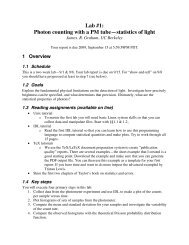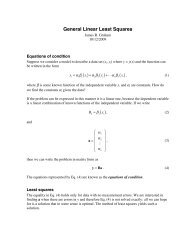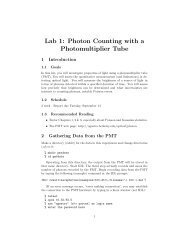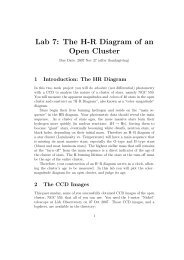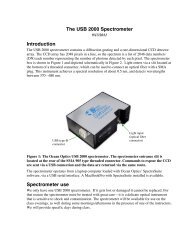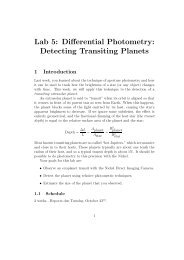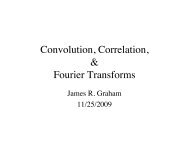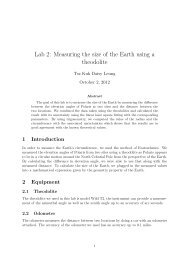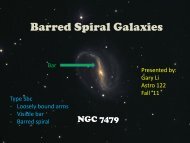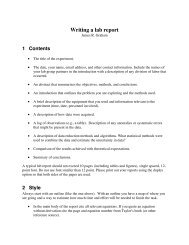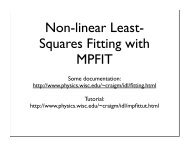Telescope User's Manual (pdf) - UGAstro
Telescope User's Manual (pdf) - UGAstro
Telescope User's Manual (pdf) - UGAstro
You also want an ePaper? Increase the reach of your titles
YUMPU automatically turns print PDFs into web optimized ePapers that Google loves.
Next, assuming the telescope is already pointing to the desired coordinates, take an exposure. An<br />
exposure of 1-4 seconds is adequate for this purpose. Changing binning to 2:2 would greatly speed up<br />
the process (~5 sec download for a full frame with 2x2 binning versus ~30 seconds without). Next,<br />
under the “Tools” menu of the camera program, select “Magnifying Glass, FWHM”. This brings up<br />
another window that will determine the Full Width Half Max (FWHM) of the object centered in the<br />
magnifying glass. Changing the glass size can make it easier to focus in on the object of interest. Check<br />
the FWHM for a couple of stars and jot down the average number.<br />
Next, using the same procedure, take an exposure and find the FWHM of the same star(s) for focus<br />
positions 25800, 25900, 26000, and 26100. Find the two Focus positions that give you the lowest<br />
FWHM. The purpose of this exercise is to find the smallest spot size which means that you are at your<br />
optimum focus. Once the two lowest spot sizes and their associated focus positions are found, the<br />
process should be refined further. This process should continue for 1 – 2 more iterations until there is<br />
no significant change when moving the focuser by 10-20 microns. For Leuschner Observatory, a FWHM<br />
of 1.5 to 2.0 arc seconds is great, 2.0 -2.5 is good, and 2.5 – 3.0 is typical.





